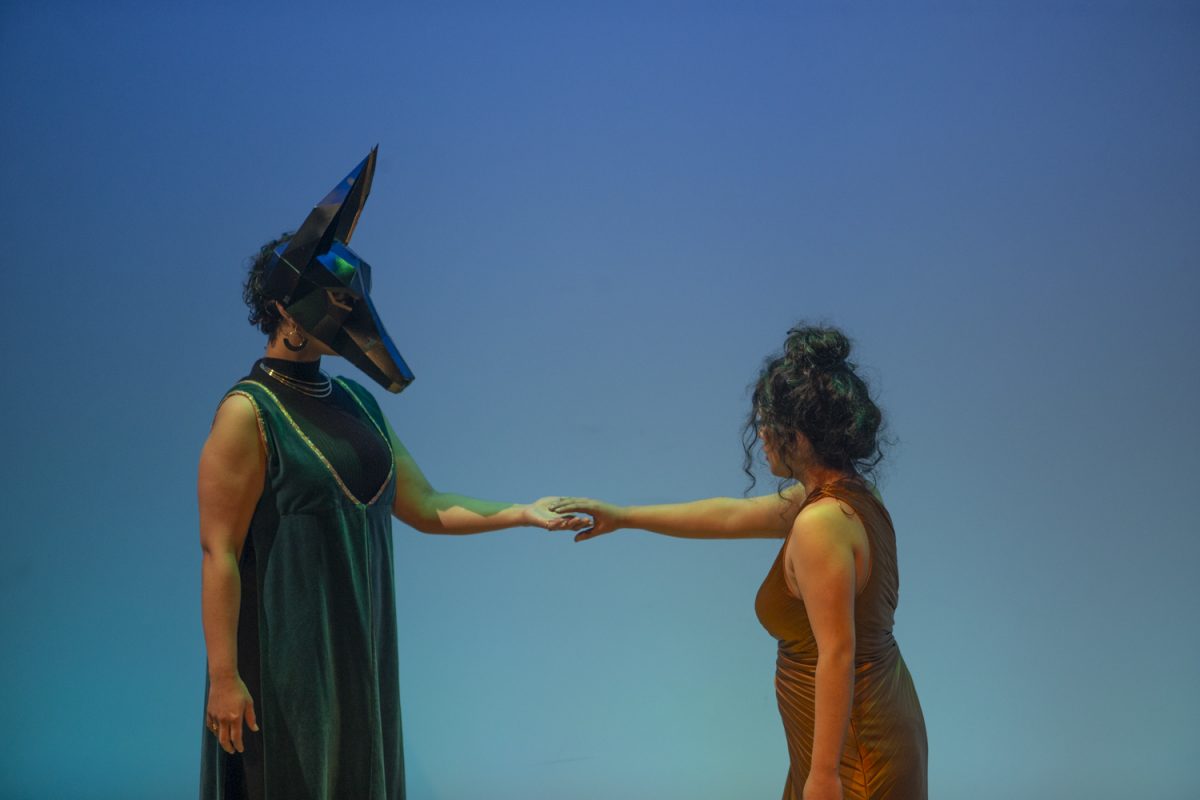
A third-grader who turns a piece of notebook paper into an origami swan has dabbled in Jocelyn Châteauvert’s favorite art form: paper art.
But Châteauvert doesn’t just fold paper. She soaks and grinds up abaca plants, beats the fibers to her liking, flattens and dries the paper, cuts it into sheets, and sculpts it into hundreds of different forms.
“I’m a huge advocate of paper,” said Châteauvert, who holds an M.F.A., a M.A., and a B.A. from the University of Iowa. “I love the physicality of paper. It’s something to behold in the sense that one would experience in nature. Every step along the way has potential for artistic expression.”
Of the thousands of paper sculptures she has crafted over the years, Châteauvert has combined 900 of her more “botanical” forms into an art installation at Cornell College in Mount Vernon, Iowa. The work, titled Paper in Bloom, has been featured in the Peter Paul Luce Gallery since Jan. 18 and will continue through March 2.
Origami swans, these pieces are not. Each paper bloom and blossom is self-supported — no strings or wires are used in the installation — so the pieces rustle together and create dynamic shadows on the walls. Cornell College gallery coordinator Susan Coleman said the exhibit has the effect of an “embrace.”
“You come out of a wild weather day, and you come in to this space, and it’s this warm atmosphere,” she said. “[The paper] is very kinetic; it responds to the movement of the air, so you can hear a little hushed sound, almost like a cotton tree. It’s very palpable.”
Coleman said the opening of Paper in Bloom was a sort of homecoming for the Iowa-raised Châteauvert, who now lives in South Carolina. It also provided the artist with 18 months to experiment with the art form she fell in love with while earning an M.F.A. in metalworking and jewelry at the UI.
Papermaker Timothy Barrett, the director of the UI Center for the Book and an associate professor, said Châteauvert took an interest in paper art just as enthusiasm for book- and papermaking took off in the late-80s.
“The arrival of the digital era has created an atmosphere in which people are paying more attention to books and paper,” he said. “It has a certain weight in our culture.”
Barrett helped Châteauvert marry her metalworking expertise with her newfound love of paper — which, he said, is often mistaken as a weak substance.
“[Châteauvert] saw paper as a complement to other materials [such as] silver and gold and plastic,” he said. “It turns out paper can be made very tough and very strong … she knew she could work with it in very creative ways.”
Indeed, Châteauvert has spent the last 20 years cultivating her paper repertoire (and has earned numerous awards in the process). She said she waits for the paper to give her inspiration.
“I’m not really a conceptual artist. Mine is all process-driven,” she said. “Ultimately, the paper tells me what to do. It’s about being involved in the moment of what you’re trying to do.”
One particularly inspirational moment for Paper in Bloom occurred one year into the project, when Châteauvert decided to open up all the flattened pieces she had created — filling her studio with dozens of 12 to 16 inch paper blooms.
“It was like, ‘Oh, my God.’ They drove me,” she said. “It’s always more beautiful than I had in my own mind. [Paper] has this amazing capacity to give.”
Châteauvert said she starts “from the ground up” with her projects — especially when crafting nature-inspired sculptures.
“It’s very much like a garden,” she said. “You make the paper, and that’s like planting the seed. But you can’t just plant the seed and walk away — you have to tend it.”
Châteauvert said “tending” requires work ethic and patience — qualities she adopted growing up in Iowa.
“This takes a lot of work, but it’s good work, and it’s happy work,” she said. “People always ask how long it takes to make something, and I think the best [answer] I’ve come up with is that it’s taken my whole life. I pursued being a creative person for a very long time.”
As for Paper in Bloom, Châteauvert said she encourages people to touch the pieces to see just how strong paper can be. And when the exhibit wraps up on March 2, her “blooms” will, like all paper should, be recycled.
“They’ll have a longer life than this single exhibit,” she said. “Now that they’re made, I look forward to reconfiguring and reinterpreting them. They took so much of me, I’m kind of bereft. I have a very intimate relationship with paper.”






